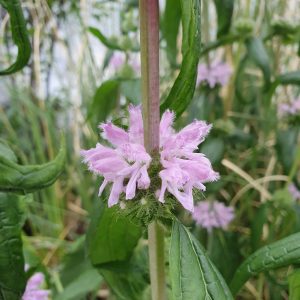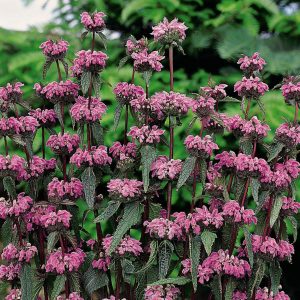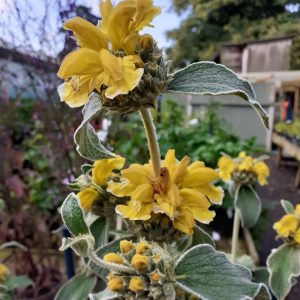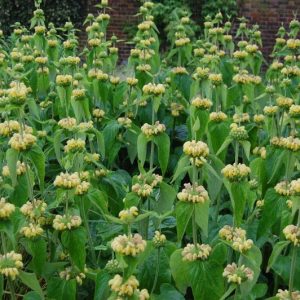Phlomis, commonly known as Jerusalem Sage or Turkish Sage, is a versatile and hardy perennial known for its unique foliage and attractive flowers. Follow these planting guidelines to ensure the successful establishment and growth of your Phlomis plants:
Choosing the Right Location
Sun Exposure: Phlomis plants thrive in full sun to partial shade. Choose a location that receives at least 6 hours of sunlight per day.
Soil Type: Well-draining soil is crucial for Phlomis. They tolerate a variety of soil types, but good drainage helps prevent root rot. Amending heavy soils with organic matter can improve drainage.
Planting Time
Spring or Autumn: The best time to plant Phlomis is in the spring or autumn when the soil is workable and temperatures are moderate.
Planting Steps
Digging the Hole: Dig a hole that is twice as wide as the root ball of the Phlomis plant. The depth should be equal to the height of the root ball.
Root Ball Positioning: Place the Phlomis plant in the center of the hole, ensuring that the top of the root ball is level with the soil surface.
Backfilling: Fill the hole with soil, gently tamping it down to remove air pockets. Water thoroughly to settle the soil.
Spacing
Allow Adequate Space: Provide adequate spacing between Phlomis plants, considering their mature size. This prevents overcrowding and allows for good air circulation.
Watering
Establishment Period: Water Phlomis plants regularly during the first growing season to help them establish a strong root system.
Subsequent Watering: Once established, Phlomis is drought-tolerant. Water deeply when the soil is dry, but be cautious not to overwater, as they are susceptible to root rot in waterlogged conditions.
Mulching
Mulch Application: Apply a layer of organic mulch around the base of Phlomis plants to conserve soil moisture, suppress weeds, and regulate soil temperature.
Pruning
Spring Pruning: In late winter or early spring, prune Phlomis to remove any dead or damaged growth. This encourages a compact and bushy habit.
Fertilising
Minimal Fertilisation: Phlomis generally doesn’t require heavy fertilisation. A balanced, slow-release fertiliser applied in spring is usually sufficient.
Pests and Diseases:
Monitor for Issues: Keep an eye out for common pests and diseases, such as aphids or powdery mildew. Treat any problems promptly.
By following these planting guidelines, you can enjoy healthy and vibrant Phlomis plants in your garden. Adjust care based on specific local conditions and the variety of Phlomis you have planted.







